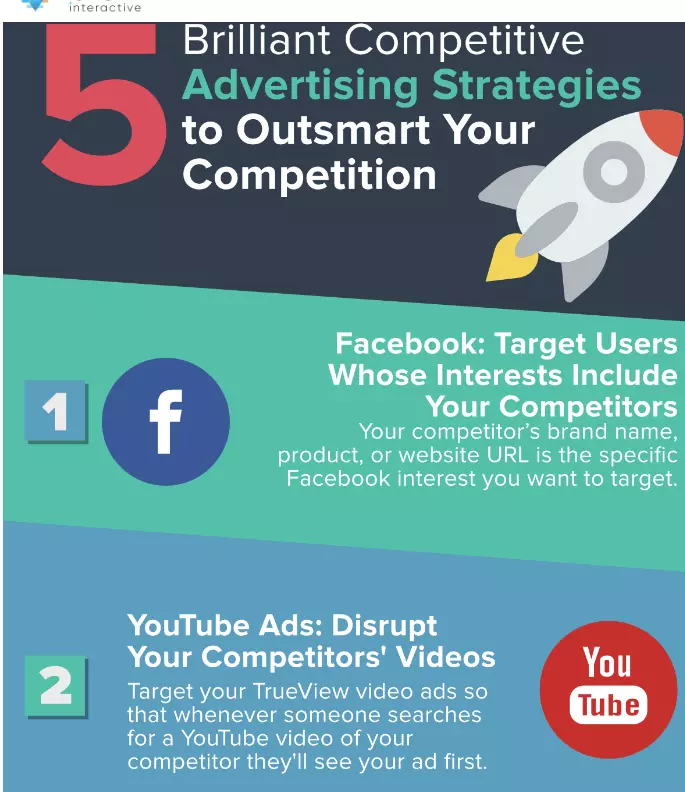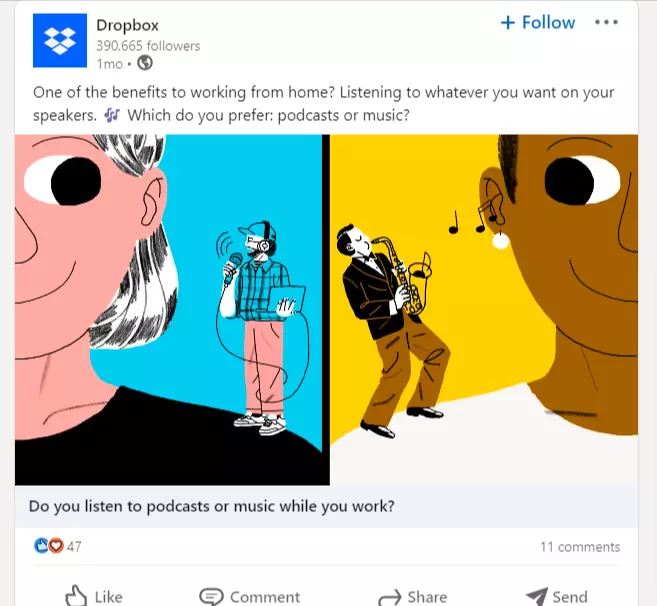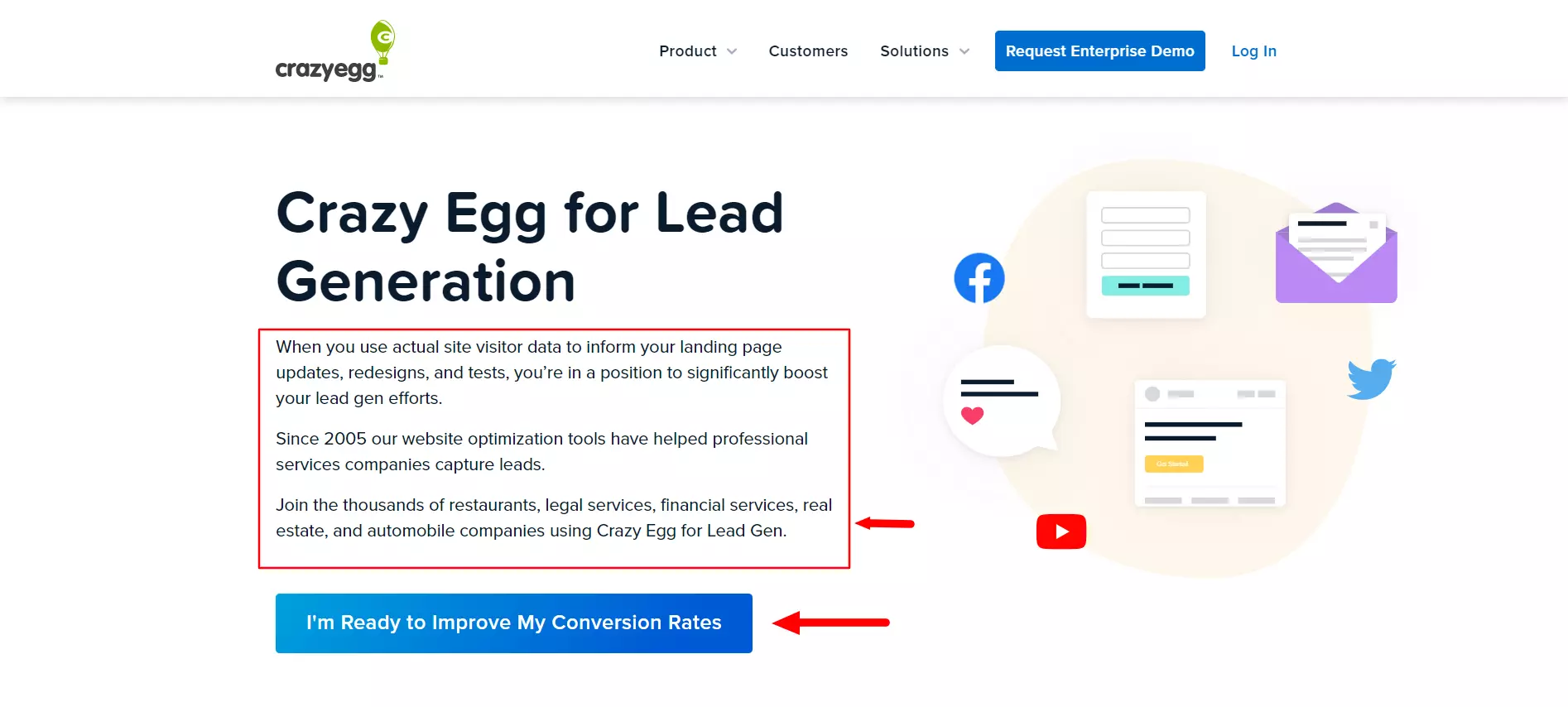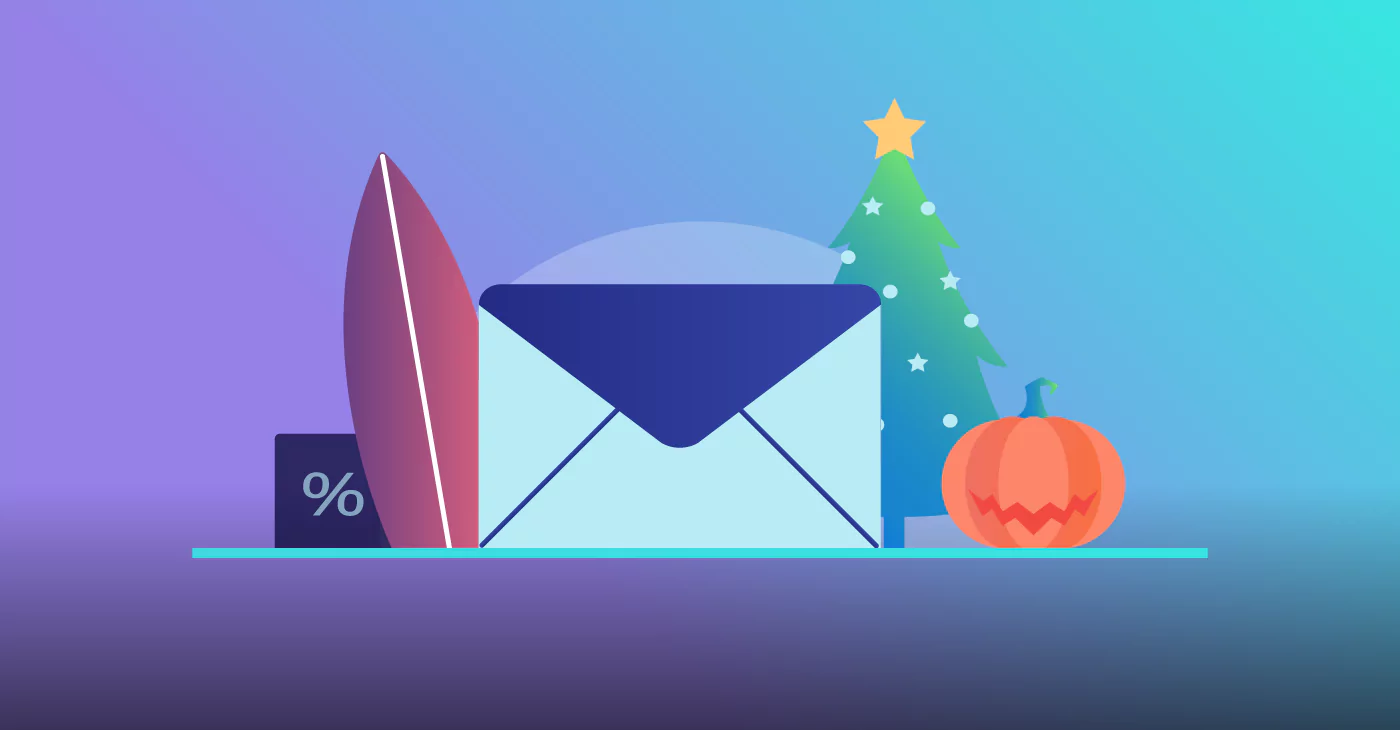14 Small Business Inbound Marketing Mistakes and How to Avoid Them
March 29, 2023 13 min read

Whether it’s indiscriminate advertising or cold calls, the buyer’s benumbed senses are experts at shutting down the noise created by traditional outbound marketing practices. Today, the internet offers consumers a wealth of information on topics they want to explore. Hence, customer journeys begin before a company knows.
This is why small business marketers need a unified strategy that can offer value and create exceptional experiences for customers before they interact with the brand.
That’s what inbound marketing is about – creating stellar content that educates prospects in a non-intrusive manner. The goal is to educate and lure prospects, not to sell (at least not directly!).
A HubSpot 2021 report reveals that 82% of B2B companies globally leverage inbound tactics like content marketing and SEO to attract and convert leads.
Yet, even the biggest brands can with inbound tactics and make some serious mistakes. Is your small business making them, too?
14 Small Business Marketing Mistakes—and How to Overcome Them
Running a small business is not easy; you face numerous challenges, particularly when it comes to marketing. Some of these difficulties include a limited budget, keeping up with technological innovation, and juggling lots of tasks at once. Marketing is key to small business growth, and small businesses must develop a solid marketing strategy in order to stay focused and avoid distractions. Here are some inbound marketing mistakes that small businesses face and how you can overcome them.
1. Failing to Build a High-Converting Marketing Funnel
The role of a high-conversion marketing funnel is to pique customer interest, build trust, and encourage them to take an action. The marketing funnel stages, when crafted correctly, can generate an unlimited number of highly qualified leads that move up the value ladder.
However, most businesses overlook this methodical and well-organized approach to engaging prospects and converting them into paying customers. Thus, they risk losing qualified leads who often find purchase steps confusing.
Your marketing funnel should be clearly mapped out to make the purchase process quick and frictionless. This will boost funnel conversion. Here are a few tips to consider:
Make it Easy for Customers to Buy
Does your website form have too many fields? Are the CTAs clearly stating what the customer should do next? How would you rate your site’s usability?
Ask these questions when creating a seamless experience for your customers.
Pay Attention to Responsive Buyers
If you have hyper buyers in your funnel, it’s important to focus on them because they can help you double your business in no time.
In his book, 80/20 Sales & Marketing, Perry Marshall shares that 20% of a business’s target audience is willing to spend four times their existing spend.
Leverage storytelling to attract leads and direct them lower into your funnel. Use storytelling formats like infographics, videos, and interactive web pages to address the customer pain points and achieve the goals of a specific buyer persona.
This infographic by WordStream summarizes all the information their audience needs on advertising strategies to outsmart their competition. It is a perfect content format to attract customers into the marketing funnel.
Use heat maps when designing your website to identify areas hurting your funnel conversion and generating more sales.
2. Not Encouraging Users to Sign Up to Your Email List
Emails are an effective tool for reaching and nurturing customers. They offer an astounding ROI of 4200%, making it one of the most profitable channels for marketers. Yet, most marketers either miss leveraging this channel or use traditional interruptive methods to share their message.
The inbound marketing method works differently. It attracts potential users to the website (inbound traffic) and leverages opt-in email forms that pop up on your website. This encourages contacts to join your email list. Moreover, you have engaged customers and improved lead conversion rate and revenue.
Here’s how you can use email to your advantage:
- Build a receptive audience. Share clearly what your subscribers will receive when they sign up with you.
- Create targeted and relevant content. Leverage personalization (consider their past behavior and interests) to craft customer-specific emails.
- Add value through your content. Don’t simply ask for a sale. Create emails that your audience will find interesting, useful, and entertaining.
- Include an opt-out option. Make sure you offer your customers a way to indicate that they no longer want to receive your emails.
3. Neglecting to Track / Analyze Buyer Data
Data hygiene is of primary importance in inbound marketing. Yet, most marketers neglect to collect, track, and analyze customer data.
Failure to track and analyze buyer data is a serious mistake that can negatively affect your bottom line. How can you determine whether all the time, money, and effort invested in a campaign are paying off? How will you decide if your strategy needs a change? Are you tracking the right KPIs?
Fortunately, marketers can track everything from website traffic to conversions. Tools like Google Analytics, conversion tracking software, and behavior analytics platforms can help track how a customer interacts with your site’s content and ads. These tools offer real-time data that allow marketers to attribute conversions across their marketing stack.
Besides, it is important to make sure that the customer data is accurate and updated across all touch points.
4. Guess Working the Buyer Persona
Creating a clear buyer persona helps marketers get a better understanding of their customers and their habits, behaviors, attitudes, and concerns. Thus, they can tailor their marketing efforts to attract qualified leads. Thus, personas make lead acquisition and nurturing more effective.
The best way to build an accurate buyer persona is to interview real people (prospects or customers) and understand their pain points and buying behavior. But what do most marketers do instead? Rather than investing in market research, they make calculated guesses on who their ideal customer is.
Such personas are nothing more than a collection of assumptions. They lead marketers down false trails and can be disastrous for a company’s marketing funnel.
The solution? Talk to your ideal customer. Meet them and learn about their business needs, challenges, and goals. Besides, involve your customer-facing team to offer insights on the type of customers they interact with.
Here are a few questions that can get you started:
- Who in their company got in touch with you?
- Are they the decision-makers? Or do they have a supervisor who makes most of the decisions?
- What does their job profile look like? Are they the primary point of contact? What is their role at work? Do they manage people or processes?
- What does their personal life look like? What’s their age bracket? Do they have hobbies?
5. Not Underestimating the Power of Social
Social media marketing is not the first thing that comes to mind when we think of inbound marketing. That’s exactly why marketers often underestimate what social can do for their business.
In this era of digital transformation, sales meetings, conferences, and most business decisions happen online. Social plays a critical role in building meaningful relationships that could bring in lucrative contracts.
So, if your team doesn’t have a social media strategy, you are missing out on a huge opportunity to build your audience.
Before creating a social strategy for your business, ask yourself these questions:
- Who is your target audience? Who is your ideal customer? What are their interests and social media consumption habits?
- What social goals are you trying to achieve? Decide on your goals – a clear definition of what success looks like. Besides, decide how you will measure success to make adjustments in your strategy if needed.
- What content will you share, and on which channel?
- What type of content is your audience likely to appreciate? Do they prefer educational, informational, or humorous content? Conversational content, like starting a debate on topical industry issues, works well when engaging audiences.
Check out this post from Dropbox, a popular digital content sharing and hosting platform. The brand uses its LinkedIn page to not just share information about its product but also light, engaging content that its audience can relate to.
- Which channels are best suited for your business? In a 2021 Statista survey of marketers, 79% of respondents stated that LinkedIn produced the best results for their business, followed by Facebook and YouTube. Determine what channel works best for business but make sure you don’t stretch yourself too thin, trying to build a presence everywhere.
- When will you share the content?
- Your social content calendar should be well-planned, ensuring consistent outreach across all channels.
- What social metrics will you track?
To get the most out of your social campaigns, it’s important to measure their success through social metrics that matter. The most common metrics tracked by inbound marketers are reach, impressions, referrals, engagement, virality rate, video views, and more.
6. Missing Out on CTAs
CTAs are indispensable inbound marketing tools when it comes to getting visitors to act. This secret weapon plays a big role in boosting traffic, conversions, leads, and revenue.
Yet, it’s one of the most underrated tactics used by small business marketers. In fact, research shows that 70% of B2B small business websites fail to display a clear CTA, causing them to lose out on critical conversion opportunities.
A clear, concise, and compelling CTA is a must to persuade visitors to consume your content and take action.
When creating strong CTAs, consider these three important points:
- Pay attention to the copy. The copy of your CTA should capture your reader’s attention within seconds of landing on your page. Moreover, it should spark curiosity.
- Check out how Crazy Egg shares interesting copy that keeps their visitors reading the entire page till they reach the CTA that is straightforward and focuses on customer benefits.
- Keep it short, simple, and actionable. For instance, a simple CTA like “Register Here for the Webinar” or “Call Us Now” can work in various situations.
- Use bold colors to highlight the CTA and clearly state the end benefit the visitor will derive from clicking on it. For instance, “Download the Free Report” is better than “Download Now.”
7. A Limited Marketing Budget
Because funds are limited, creating a marketing budget for your small business is difficult. As a result, small business owners frequently do not budget for marketing at all. But it’s always better to set aside funds for marketing, however small. A limited marketing budget should not prevent you from seeing results from your efforts.
It is critical to recognize that you will be doing marketing throughout the lifecycle of your business. With this in mind, you can create a marketing budget for a few months rather than a full year and later review it to see how much it helped you to grow.
Outsourcing marketing operations to experienced marketing experts is sometimes the right choice for teams that can’t or don’t want to allocate budget to a full-time marketing team member. Working with certified experts rather than spending time and money training a new hire is a good choice for business leaders who want fast results.
If you decide you will handle marketing in-house, there are numerous methods for small businesses to gain recognition without breaking the bank. Below are some ideas to get you started:
- Establish a referral program – Many users will be willing to spread the word about a product or service if they know they will be rewarded in return.
- Stay active on social media – Take a look at Facebook, Instagram, and other platforms to assess which social channels are most appropriate for your business, and concentrate your advertising efforts on those platforms.
- Start a blog – Storytelling is an excellent way of marketing your business and ensuring that users remember it. By creating insightful content, you’ll be providing value and giving customers a reason to visit your website more often.
8. Not Enough Content
To keep your brand top of mind, you should publish quality content regularly. But if this feels tricky to do, you’re not imagining it! It is indeed difficult to create content for your website, emails, and social channels as a small business.
Consider working with a content manager. By picking someone who is skilled in your industry, you’ll be able to get the help that you need to create content that offers value to your readers. Or, look into AI-generated content. Tools like ChatGPT can help small teams with limited budgets create high-quality content quickly.
Once you’ve created some content, consider breaking it into different chunks, like infographics, email campaigns, social posts, and a blog. And remember: don’t over-promote yourself, as this can turn off customers. Instead, try to focus on interesting findings, statistics, and advice about your industry.
9. Failing to Beat the Big Brand Competition
Small businesses face a lot of competition, both from other small businesses and from big brands. Keeping existing customers—as well as acquiring new ones—is a difficult task that every small business faces.
Make sure that you understand your own unique selling proposition. Maybe it is providing exceptional customer service that your clients cannot find anywhere else. Perhaps your product or service range allows you to meet your customers’ needs in a different way than your competitors. Or, it could be that you consistently provide fantastic value for money.
Learn about your customer’s pain points by asking open-ended questions about what they want to accomplish with your product or service. This will help you to understand why they choose your brand and what you’ll need to do to keep them as clients.
10. Not Keeping Up With Marketing Trends
As a small business owner, you likely already understand that not all marketing trends are beneficial for you. This is why you must sort through trends and select the ones that are most appropriate for your business.
Keep in mind that marketing has evolved beyond simply advertising and branding your business. These days, customers expect personalized communication. That can be laborious to provide on an individual basis to each client, which is why many modern marketers are leveraging customer data and AI to speed up the process of providing timely, personalized, relevant communications to customers.
11. Hiring the Wrong Talent
As a small business owner, you want to hire someone who will add value to your company, and if it turns out that your new hire isn’t the right fit, it can be painful, given how stressful and expensive it is to bring new people on board.
To overcome this, make sure you vet applicants carefully and consider providing a simple test they can take to demonstrate their skills.
12. Not Evaluating Campaign Results
Performance evaluation is used to determine whether all of your marketing strategies are actually growing your business. When performing this evaluation, you must take note of the opportunities you have received during this time period as well as the challenges you have encountered.
In order to properly evaluate your campaign results, it’s important to set marketing goals that you can grade the results against. That way, you know what you’re trying to achieve, and you can make tweaks to your strategy to ensure that it’s tailored to your specific needs.
Having email marketing software makes evaluating the results of your email campaigns a sinch. With Benchmark Email, you can gain access to email metrics like open rate, click rate, unsubscribe rate, and bounce rate. These indicators tell you how your email is landing with your subscribers and where you may need to make some changes.
13. Not Focusing on Getting New Customers
Small businesses are eager to expand their customer base, but they frequently lack the knowledge of how to do so. Before you find a new customer, it is critical that you understand who your current customers are, the value they receive from your business, and that you listen to their needs. Once you’ve identified your customers, you can create a target audience for your business to attract new customers.
Try networking and connecting with other businesses in your area, and ask for referrals from existing customers. By tapping into local networks, or the family and friends of the people that already love your brand, you can find new people who are seeking what you can provide.
Make use of social media and maintain an active presence on it. Getting new customers means getting your name and company brand out, and you’ll have a better chance of getting noticed if you’re regularly posting to the social channels that your target demographic use most frequently.
14. Not Retaining Current Customers
Did you know that it typically costs five times more to attract a new client versus keeping an existing one? That alone is a great reason to get better at customer retention.
So, how do you keep your clients on board for longer? Once again, it starts with content. Send your existing clients resources that can help them get the most use out of your products and services. Send personalized perks, gifts, and/or exclusive promos too, and use milestones like birthdays and customer anniversaries as excuses to send offers and messages.
Don’t be afraid to change your approach to individual clients over time. Get creative with your customer retention strategies, and know that as their plans change, so should yours. If you notice that a client is on a package that no longer suits them, adjust it — even if it costs them less. It’s better to keep a client around on a lower-tier plan than to lose them entirely.
Summing Up
No business intends to commit the mistakes shared above, especially when they can cost them their bottom line. Yet, over the years, most companies struggle to avoid these mistakes, either because they ignore the marketing best practices or adopt superficial tactics.
We are sure you will learn from the common mistakes we’ve shared above and eliminate them from your inbound marketing efforts.
Author Bio
Lucy Manole is a creative content writer and strategist at Marketing Digest. She specializes in writing about digital marketing, technology, entrepreneurship, and education. When she is not writing or editing, she spends time reading books, cooking and traveling.









